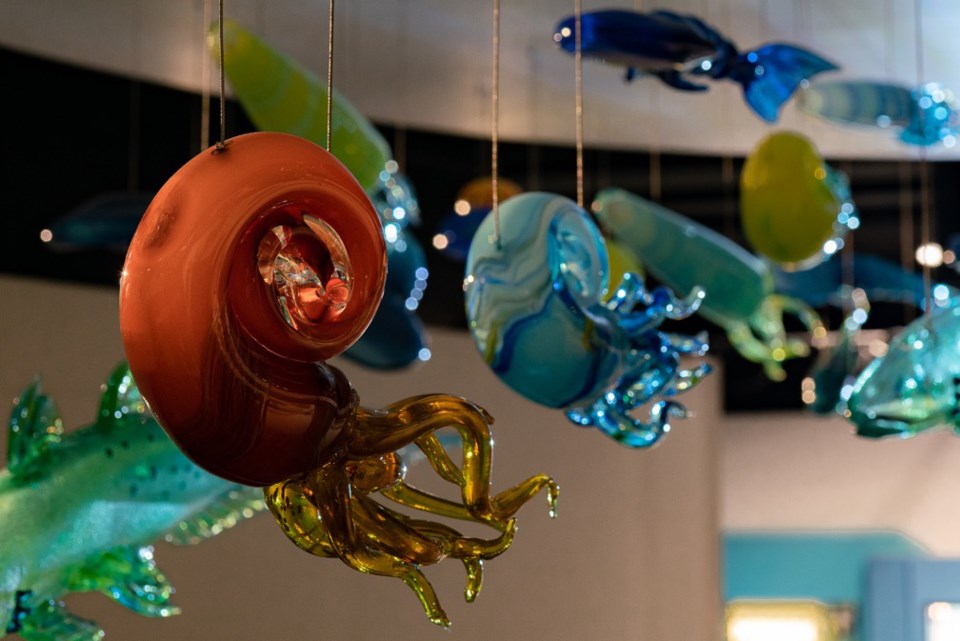Colourful glass sculptures crafted from the hands of Black Diamond glassblowers hang from the ceiling of a popular prehistoric museum.
The Royal Tyrrell Museum commissioned Firebrand Glass Studio to create glass art as a transition between two exhibition spaces focusing on the Paleozoic Era 443 to 416 million years ago.
Now 80 colourful glass pieces resembling a combination of ocean and land creatures adorn the space.
“We researched the timeframe and one of the key things that happened is creatures figured out how to get from sea to land,” said studio co-owner Julia Reimer. “I thought it would be great to have all these objects showing movement through their gestures and their form.”
Reimer said blown glass is the perfect material to portray that movement.
“It’s very fluid,” she said. “When we’re blowing glass we’re working with a liquid and when we shape it the shape becomes a solid.”
The installation, which went up in March, is quite different from what’s typically displayed at the internationally renowned museum, said Reimer.
“When you go to the Tyrrell there’s incredible objects there whether they’re fossils or newly-fabricated models, but there isn’t a lot of glass,” she said. “The glass really illuminates the space.”
This marks the second time Firebrand created work for the Drumheller museum.
In 2015, owners Reimer and Tyler Rock worked with a paleontologist to create 10 glass-blown models of prehistoric pollen and spores.
“They’re a fantastic organization to work with,” said Reimer. “You get to make this beautiful piece, work with great people and be challenged technically.”
In this case, they worked with scientists specializing in the Paleozoic era to learn about the various species to inspire their work.
“As a visitor you don’t really see scientific minds, but here’s all these creative minds at work,” she said. “We saw it as this incredible resource to access.”
Reimer said they studied different species, particularly their shape and texture, to create the installation.
Those first entering the installation will view water creatures, but as they walk through the shapes transform to represent land-dwellers, said Reimer.
“At the beginning we enter into the space and there’s all these fish and other wacky Paleozoic creatures – very different from anything we’re used to seeing nowadays,” she said. “We wanted to give the viewer the feeling that all of these creatures are moving to a destination. They’re not anatomically correct, but they’re very colourful.”
Reimer said she saw the request for proposal from the museum in September and jumped on the opportunity.
“I put two weeks of unpaid work into doing the proposal because to me it was a dream project,” she said. “To have it be in that space that’s so world renowned it just feels like an honour and privilege to be part of it. I feel like every week somebody says to me, ‘I saw your sculptures there.’”
The installation has received great feedback, according to Lisa Making, the museum’s director of exhibits and communication.
“This sculptural piece helps us represent marine life moving to land in a much more abstract way,” she said. “Julia worked with one of our scientists in establishing the forms and general shapes. She worked hard to make sure they stayed somewhat true.”
The installation offers a visual representation of the era to help visitors make that connection while providing a beautiful aesthetic feel as they move from one gallery to another, said Making
“She does a beautiful job,” she said. “The feedback has been awesome.”




